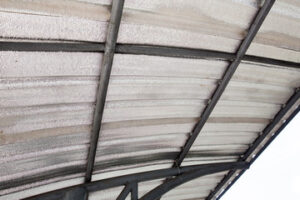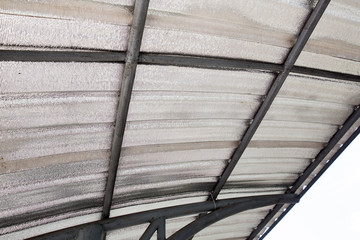Radiant Barrier Houston can be a great addition to your home’s insulation. They keep your house cooler in the summer and reduce cooling costs. They work in tandem with your other attic and wall insulation.

They are best installed in new homes, where they can be draped under the roof sheathing, with the foil side down. However, they can also be installed in older homes.
Radiant barriers are a type of insulation that reflect radiant heat rather than absorb it. They are installed in homes — usually in attics — to reduce summer heat gain and cut cooling costs. They don’t reduce conduction, however, like conventional insulation materials.
There are a few different types of radiant barriers on the market. One type is made of aluminum foil with an abrasion-resistant coating. Another is a reflective material with a polypropylene or kraft paper backing. The backing helps prevent the foil from tearing, and it also adds strength. The foil can be either single-or double-sided. The reflective surface can be coated for resistance to the elements or abrasion, and it may be perforated for vapor transmission.
A radiant barrier is an excellent choice for buildings with a flat roof, especially those that are south-facing and subject to direct sunlight. It can help keep the attic cool and reduce energy bills during the summer, while still allowing for the attic to be used as storage space. It is also a good choice for buildings without much insulation, including barns and sheds.
The best radiant barrier is a panel of oriented strand board (OSB) with an attached laminated foil. Other barrier products that consist of cardboard, kraft paper, or plastic film tend to be less effective. To maximize the performance of radiant barriers, you should make sure that they’re properly installed and that the attic is ventilated. Moisture is the biggest threat to radiant barriers, so it’s important to seal holes and leaks and to ensure that there are no obstructed vents.
Radiant barriers have a high reflectivity and low emittance, and they’re ideal for areas with limited space. They can be installed in conjunction with a traditional cellulose or fiberglass insulation, or they can be used alone. They’re especially useful in hot climates, where the air is more humid and warm.
Radiant barriers are available in a variety of sizes, and some are designed to be installed as loose-fill or spray foam insulation. They can be a cost-effective option for many applications, including new construction. They can also be used in retrofit projects to improve the thermal performance of an existing home.
It’s material.
Radiant Barrier is a reflective building material that helps reduce summer heat gain and cooling costs. Its effectiveness relies on the principle that radiant energy, which is generated from the sun or another source, is reflected rather than absorbed. It is often combined with thermal insulation, which slows down heat transfer by conduction and convection.
It’s important to understand how radiant barriers work before you choose one for your home. While they do reduce the amount of energy it takes to cool your home, they aren’t a substitute for traditional insulation. You should install both to achieve maximum savings.
You can purchase radiant barriers at most do-it-yourself retailers. They come in two forms: foil and vapor barrier. They are usually installed in the attic as an alternative to standard attic insulation or in new home construction. They are also available as part of a package that includes other energy-saving measures, such as blown-in attic insulation.
The type of radiant barrier you choose depends on your needs and budget. The best option for a typical homeowner is to go with a non-breathable radiant barrier. This will help keep the attic cooler, and it’s also easier to install in existing homes. If you’re building a new home, you can have your contractor apply it to the attic floor in place of plywood or oriented strand board.
You should avoid using spray foam insulation with your radiant barrier, as it will make it ineffective. This is because the radiant barrier must be placed at least 3 inches away from spray foam to be effective. If you’re considering using a combination of radiant and insulation in your home, ask your contractor to test the air gap between the insulation and the radiant barrier.
Radiant barrier costs vary, but it’s best to shop around for the best deals. You can save money by installing the product yourself or securing it as part of an energy-saving package. Some contractors even offer rebates for installing radiant barriers.
Radiant barriers are made of non-toxic materials and can be used in any home. They are safe for people with respiratory problems, and they won’t irritate your eyes or skin. Radiant barriers do not emit harmful particles, and they are easy to clean.
It’s a process.
Radiant Barrier is a technology that significantly reduces the transfer of heat into and out of a home by reflecting radiant energy. It is a very effective product that works well in warm climates and can yield a 5-10% reduction in cooling costs. However, it must be installed correctly and properly maintained to yield the best results.
The key to the effectiveness of a radiant barrier is its high reflectivity and low emissivity properties. The reflectivity must be at least 0.9 and the emissivity must be at or below 0.1. It must also be positioned with the open side facing an air space to perform properly. This type of insulation is often installed in attics and is used to prevent summer heat gain. It can be used alone or in conjunction with conventional thermal insulating materials.
Radiant barriers are a popular option in new construction homes, as they can help reduce cooling costs and increase a building’s efficiency. They also reduce the amount of air conditioning needed to cool a house. But before you choose a radiant barrier for your new construction, be sure to consult with your state or local building department.
In new construction, it is important to make sure that the radiant barrier is installed in the proper attic area. If it is not, it could result in a significant decrease in the performance of the insulation system.
When installing a radiant barrier in an existing home, the most common method is to staple it to the underside of the attic joists. This is a relatively easy and inexpensive installation method that can reduce cooling bills by keeping the attic cooler.
Some manufacturers offer radiant barriers that are pre-laminated to oriented strand board or roof sheathing. This can save time and money for a builder, since it is one less step to complete the project. However, the lamination process can degrade over time, causing the foil to become detached from the plastic lining.
If your attic has ductwork in it, you can also install the radiant barrier by stapling it to the attic joists or laying it over the existing insulation. This will keep the attic cooler and will allow your air conditioner to work more efficiently. Be sure to use a breathable radiant barrier that has small perforations so that it can still vapor vent.
It’s a technology.
Radiant Barrier is a building material that reflects radiant heat, which reduces energy costs in homes with air conditioning. It is particularly effective in hot climates, and can reduce cooling bills by 5% to 10%. However, it should be combined with thermal insulation to reduce heat transfer through conduction and convection, as well.
A radiant barrier is usually made of aluminum foil, which can be applied to one or both sides of a variety of substrate materials, including kraft paper, oriented strand board (OSB), plastic films, and cardboard. Some radiant barriers are also fiber-reinforced to increase strength and durability. They are often installed in the attics of new homes. They are not a substitute for conventional insulation materials, and they do not have the same R-value rating as traditional thermal insulation.
It is possible to make a home more energy efficient using radiant barriers, but it is important to choose a professional installation company. A reputable contractor should be licensed and insured, and have an excellent track record. It should also offer a written estimate and be willing to provide references. In addition, it should not use misleading statistics about energy savings that may not be accurate for your climate.
To determine whether a radiant barrier is right for you, consult your local energy advisor or building inspector. You can also ask your state or local planning department to recommend a reputable installer. Beware of companies that use paint-on-radiant barriers or too-good-to-be-true statistics about the cost savings they can bring to your home.
Radiant barriers are most commonly installed in the attic of a home, but can also be used on the roof sheathing of some new construction homes. When paired with sheathing made from engineered wood, radiant barriers can be an effective way to reduce heating and cooling costs in a home.
